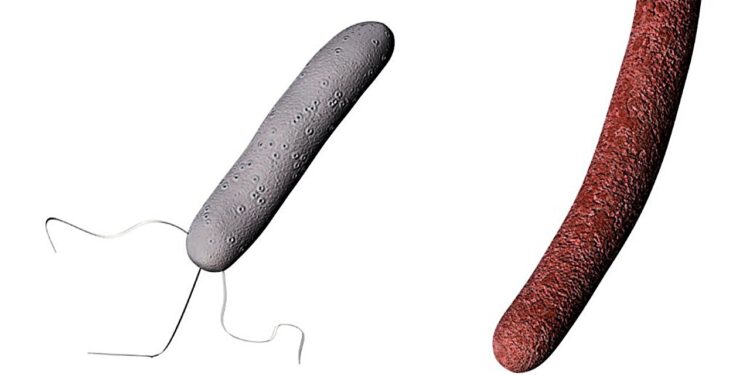Schematic illustration of A-Gyo and Un-Gyo. Credit: Eijiro Miyako / Jaist
A joint research team led by Professor Eijiro Miyako of the Japan Advanced Institute of Science and Technology (Jaist), in collaboration with Daiichi Sankyo Co., Ltd. And University of Tsukuba, developed therapy of bacterial cancer of immunity using a new microbial consortium called AUN.
Immunotherapy against cancer was born in 1868 when the German doctor Busch reported a case of a cancer patient who was intentionally infected with bacteria and was then healed. In 1893, Dr. William Coley proposed the use of bacteria for cancer treatment, and immunotherapy evolved towards modern treatments such as inhibitors of control points and CAR-T cells for more than 150 years. Although powerful, these approaches fundamentally depend on immune cells, making them ineffective for many cancer patients with compromise immune systems due to chemotherapy or radiotherapy.
The newly developed Aun therapy reverses this longtime limitation. Research is published in Biomedical engineering of nature.
AUN is made up of two natural bacteria:
- Proteus Mirabilis (A-Gyo), a resident microbe at the tumor
- Rhodopseudomonas palustris (un-gyo), a photosynthetic bacteria
Working in perfect synergy, these Aun bacteria produce exceptional tumor eradication in murin and human cancer models, even in immunocompromised environments, all without the help of immune cells. Therapy has high biocompatibility and minimum side effects, including the abolition of cytokine liberation syndrome (CRS).
In this study, the AUN has transcendent anti -tumor effects through bacterial mechanisms orchestrated in a unique way, in particular:
- Selective destruction of the tumor vascular system and cancer cells
- Structural transformation of A-Gyo (Filanation) triggered by tumor metabolites, improving its anti-tumor power
- Functional optimization via the intratomoral offset of the population-although the initial bacterial mixture is a-gyo: a-gyo ≈ 3:97, it radically goes to 99: 1 in the tumor tumor microenvironment
- Deletion of pathogenicity and minimization of side effects, including avoidance of the CRS
In particular, Un-Gyo only works as a regulatory partner when he coexists with A-Gyo, helping to remove the pathogenicity of the two strains while simultaneously improving their specific cytotoxicity for the tumor. This “work cooperation” reflects the Japanese philosophical concept of Aun – a perfect harmony between opposites. It is this delicate and dynamic interaction between the two bacterial species that unlocks the remarkable anti -tuthical efficiency – a feat previously inaccessible through conventional therapies.
“To accelerate the social implementation of this research, we are preparing to launch a startup and target clinical trials within six years,” said Professor Eijiro Miyako, principal author of the study. “A new chapter of cancer therapy based on bacteria – has been preliminary for more than 150 years – finally begins.”
This approach represents a paradigm shift for patients with immunocompromised cancer. It offers a long -awaited therapeutic solution in cases where conventional immunotherapies fail – the obscure at the dawn of a cancer treatment really independent of the immuno -independent.
More information:
The resident oncolytics bacteria of tumors trigger powerful anticancer effects by thrombosis and selective intratumoural necrosis, Biomedical engineering of nature (2025). DOI: 10.1038 / S41551-025-01459-9
Provided by Japan Advanced Institute of Science and Technology
Quote: The bacterial duo eliminates tumors without helping the immune system in a new therapy against cancer (2025, August 5) recovered on August 5, 2025 from
This document is subject to copyright. In addition to any fair program for private or research purposes, no part can be reproduced without written authorization. The content is provided only for information purposes.



